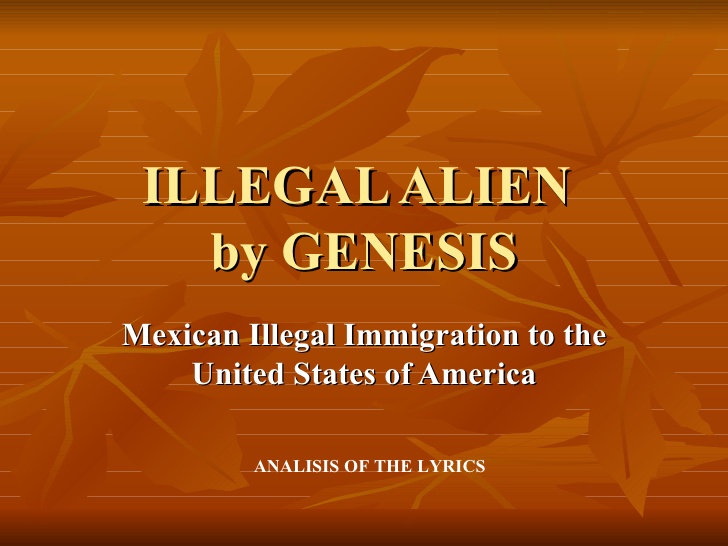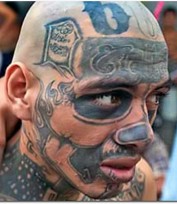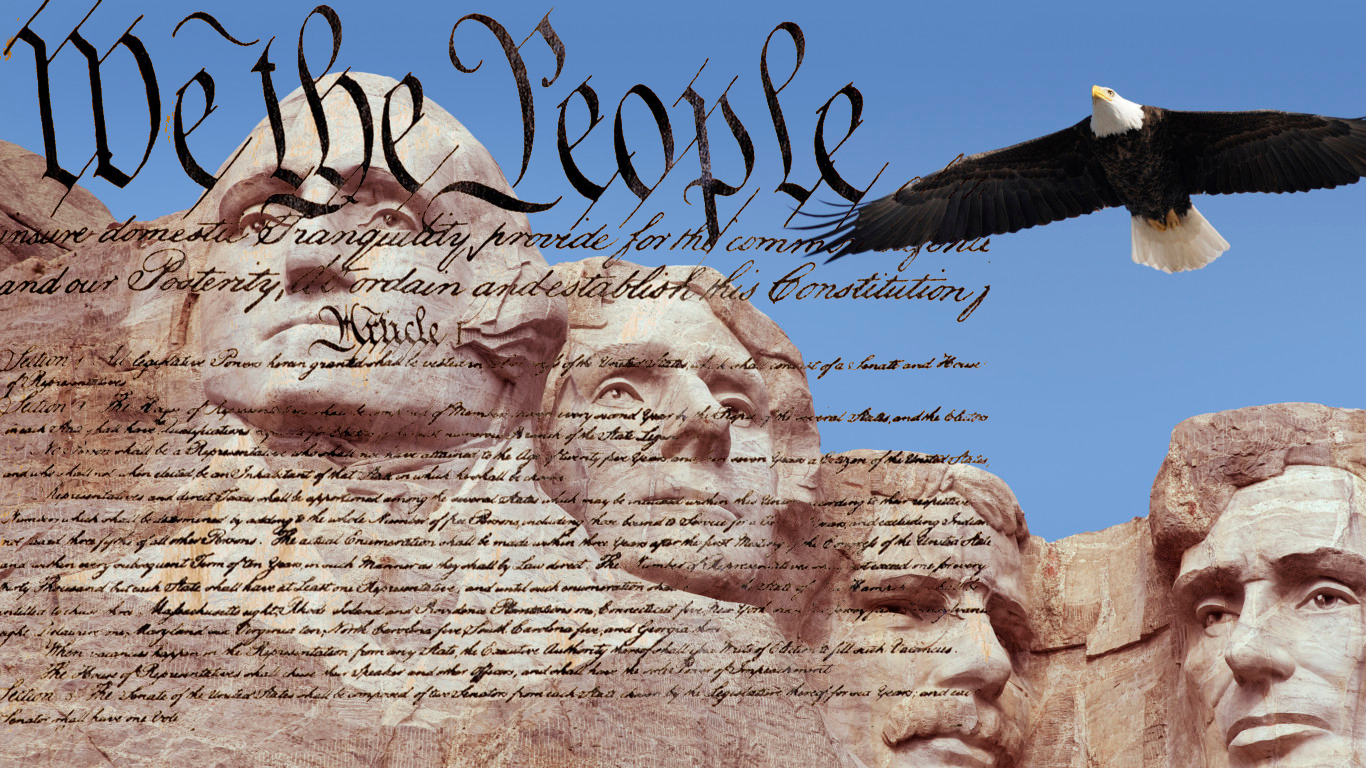President Trump issued an executive order on June 21 that laid out a plan to…
Enforcement / ICE / DHS
The Impossible Feat of Determining Who is an “Illegal Alien” Under Trump’s Unconstitutional Census Executive Order

In line with other xenophobic actions too numerous to keep tabs on, President Trump issued a Presidential Memorandum dated July 21, 2020 entitled “Memorandum on Excluding Illegal Aliens From the Apportionment Base Following the 2020 Census.” From the title itself, it is readily obvious that the Trump administration does not intend to count undocumented or,
In line with other xenophobic actions too numerous to keep tabs on,
President Trump issued a Presidential Memorandum dated July 21, 2020 entitled “Memorandum on Excluding Illegal Aliens From the Apportionment Base Following the 2020 Census.” From the title itself, it is readily obvious that the Trump administration does not intend to count undocumented or unauthorized immigrations in the 2020 census, which it pejoratively refers to as illegal aliens. Who is legal or illegal defies an easy definition. US immigration law is so paradoxical that even if one has been ordered removed, this individual may still be authorized to remain in the US and obtain work authorization.Not only is this executive order unlawful and completely unconstitutional, but it boggles the mind regarding how the administration will ever be able to determine who is authorized or not in the US in order to be counted in the 2020 census.
It is vitally important to count population numbers to divide up seats in Congress among the states. Excluding undocumented immigrants will result in less seats in Congress for Democratic states. If unauthorized immigrants are left out of the apportionment count, according to the Pew Research Center, California, Florida and Texas are each likely to end up with one less House seat, while Alabama, Minnesota and Ohio are each likely to hold onto a seat they would have otherwise lost after the 2020 Census. Since the first Census of the United States in 1790, counts that include both citizens and noncitizens have been used to apportion seats in the House of Representatives, with states gaining or losing based on population change over the previous decade.
Lawsuits have been filed – here, here and here, justifiably challenging the exclusion of unauthorized immigrants from the census counts on constitutional and other grounds. The Presidential Memorandum follows the Supreme Court’s decision in New York v. Department of Commerce , 588 U.S. ___ (2019) that held that the Trump’s administration’s prior reasoning to include the citizenship question in the Census was “contrived” and thus arbitrary and capricious under the Administrative Procedure Act (see Can the Arbitrary and Capricious Standard under the Administrative Procedure Act Save DACA). Hopefully, the courts will also smack down this Presidential Memorandum for its blatant disregard of the Constitution’s mandate under the Fourteenth Amendment to count all residents in a state.
Section 2 of the Presidential Memorandum excludes “aliens who are not in a lawful immigration status under the Immigration and Nationality Act.” But this too is broad and vague. One who is in the US in temporary B-2 visitor status for three months is in a lawful immigration status. On the other hand, a person who has resided in the US for a decade and whose status expired a long time ago could be authorized to remain in the US upon filing an I-485 application to adjust status to permanent residence by virtue of a recent marriage to a US citizen. The Presidential Memorandum provides the following false rationale for excluding undocumented immigrants:
Excluding these illegal aliens from the apportionment base is more consonant with the principles of representative democracy underpinning our system of Government. Affording congressional representation, and therefore formal political influence, to States on account of the presence within their borders of aliens who have not followed the steps to secure a lawful immigration status under our laws undermines those principles. Many of these aliens entered the country illegally in the first place. Increasing congressional representation based on the presence of aliens who are not in a lawful immigration status would also create perverse incentives encouraging violations of Federal law. States adopting policies that encourage illegal aliens to enter this country and that hobble Federal efforts to enforce the immigration laws passed by the Congress should not be rewarded with greater representation in the House of Representatives. Current estimates suggest that one State is home to more than 2.2 million illegal aliens, constituting more than 6 percent of the State’s entire population. Including these illegal aliens in the population of the State for the purpose of apportionment could result in the allocation of two or three more congressional seats than would otherwise be allocated.
However, the rationale still does not explain whether one who entered without inspection, but is now authorized to remain in the US through the filing of an I-360 petition under the Violence against Women Act and a concurrent I-485 application will be included or not in the census. It does not appear that whoever drafted this document really had any idea about how “legal” or “illegal” is considered under the INA.
“Lawful immigration status” is specifically defined in the implementing regulations at 8 CFR 245.1(d)(1) rather than in the Immigration and Nationality Act (INA) itself, for purposes of determining who is eligible to adjust status under INA 245(c)(2). It provides for the following categories of persons who are in “lawful immigration status”:
(i) In lawful permanent resident status;
(ii) An alien admitted to the United States in nonimmigrant status as defined in section 101(a)(15) of the Act, whose initial period of admission has not expired or whose nonimmigrant status has been extended in accordance with part 214 of this chapter;
(iii) In refugee status under section 207 of the Act, such status not having been revoked;
(iv) In asylee status under section 208 of the Act, such status not having been revoked;
(v) In parole status which has not expired, been revoked or terminated; or
(vi) Eligible for the benefits of Public Law 101-238 (the Immigration Nursing Relief Act of 1989) and files an application for adjustment of status on or before October 17, 1991.
It is unlikely, however, that this is what the drafters of the Presidential Memorandum within the Trump administration had in mind in deciding who is in lawful status and who isn’t. As already explained, there is a large universe of persons who are authorized to remain in the United States but who do not fall into any of the above categories pursuant to 8 CFR 245.1(d)(1). Perhaps, one is giving the Trump administration too much credit about thinking through this definition and the drafters just assumed, albeit erroneously, that there are discrete classes of those in lawful status and those who are not. Immigration law is far more nuanced. One may not have been granted asylum, and thus qualify as an asylee under 8 CFR 245.1(d)(1)(iii), but an applicant for asylum is nevertheless authorized to remain in the US and can also obtain employment authorization after 365 days of filing the application. Similarly, one who files an I-485 application to adjust status is authorized to remain in the US even if the underlying nonimmigrant status has expired.
Any attempt to define who is unauthorized in order to exclude them in something as crucially vital as the decennial census count will get it wrong. Even Chief Justice Roberts got it wrong in Chamber of Commerce v. Whiting, 563 U.S. 582 (2011), when he wrote for the majority that an individual who “had been ordered removed” would establish that individual’s lack of authorization to work. In that case, the Supreme Court upheld an Arizona state law suspending business licenses if businesses hired people without work authorization. David Isaacson in his blog, If Even the Chief Justice Can Misunderstand Immigration Law, How Can We Expect States to Enforce It Properly? Removal Orders and Work Authorization, cites many other instances when a person with a removal order is still entitled to work authorization. For example, an asylum applicant who has been ordered removed but has filed a petition for review in circuit court can nevertheless apply for work authorization and is authorized to reside in the US during the pendency of the appeal. 8 C.F.R. § 274a.12(c)(18) also contemplates the issuance of work authorization to one who has been ordered removed if the person cannot be removed or where it is impractical to remove him or her. A DACA recipient who may have been the subject of a removal order at some point is now authorized to reside in the US without fear of removal.
The sheer inability to define who is a so called “illegal alien” further opens up the Presidential Memorandum to challenge in the courts. Persons whom the government may arbitrarily decide are unauthorized may be left out of the count even if they have been in the US for years, paid taxes and been authorized to reside and work under the law. These persons have also been denied their basic humanity by not being treated as persons. This executive action will also deter noncitizens from completing the census as most – unless they are lawful permanent residents -will not know whether they are documented or not. Four decades ago, the Supreme Court reaffirmed that an undocumented individual living in the United States “is surely ‘a person’ in any ordinary sense of that term,” “[w]hatever his status under the immigration laws.” Plyler v. Doe, 457 U.S. 202, 210 (1982). It is axiomatic that undocumented individuals are human beings and President Trump cannot change this. Given the sheer impossibility of determining who is and who is not legal, President Trump must be compelled by a court to count all persons for the census regardless of their immigration status. This is also mandated by the Constitution.
,
Courts / Judicial
Federal appeals court overturns ban against immigration arrests at Massachusetts courthouses

A three-judge panel of the US Court of Appeals for the First Circuit Tuesday overturned a ban prohibiting US immigration authorities from arresting undocumented immigrants at courthouses in Massachusetts. In 2018, US Immigration and Customs Enforcement (ICE) formalized a policy of attempting to arrest undocumented immigrants when they appeared at state courthouses for judicial,
A three-judge panel of the US Court of Appeals for the First Circuit Tuesday overturned a ban prohibiting US immigration authorities from arresting undocumented immigrants at courthouses in Massachusetts.
In 2018, US Immigration and Customs Enforcement (ICE) formalized a policy of attempting to arrest undocumented immigrants when they appeared at state courthouses for judicial proceedings. Two Massachusetts district attorneys, the public defender’s office and a non-profit immigrant advocacy organization filed a lawsuit against ICE and asked for a preliminary injunction against the practice. They claimed that ICE was in violation of the Immigration and Nationality Act (INA) and lacked authority to make civil arrests at courts. The district court agreed, and granted an injunction last year.
At issue is a claim that the INA implicitly incorporates a common law privilege that protects those attending court from being subject to civil arrest. While nothing in the text of the INA prohibits these types of courthouse arrests, the plaintiffs argued that the law must be read in light of the nonderogation canon, a method of statutory construction that holds that courts must assume Congress is aware of long-standing common law principles and, absent express language to the contrary, intends to keep them.
Judge Bruce Selya wrote Tuesday that “the nonderogation canon does not give courts carte blanche to read a grab bag of common law rules into federal statutes simply to effectuate what those courts may perceive as good policy.” The circuit court held that the nonderogation canon applies if the facts of the common law rule and the statute in question are sufficiently analogous. The common law prohibited civil arrests at court by private litigants, while here the arrests are being carried out by a government agency. The panel vacated the preliminary injunction and remanded the matter back to the district court.
Rachael Rollins, district attorney for Suffolk County and one of the plaintiffs in the case, said in a statement that “this fight is far from over” and that the plaintiffs “are absolutely on the right side of justice here.”
The post Federal appeals court overturns ban against immigration arrests at Massachusetts courthouses appeared first on JURIST – News – Legal News & Commentary.
Source: Federal appeals court overturns ban against immigration arrests at Massachusetts courthouses
,
Enforcement / ICE / DHS
Traffic From Mexico Blows Through U.S. Travel Restrictions

President Donald Trump’s ban on “non-essential” border travel isn’t slowing down traffic coming from Mexico. Since the March 20 order was extended to Sept. 21, volumes have increased and sharply in some areas. San Ysidro, the busiest port of entry in California, saw a 72 percent rise in northbound pedestrian crossings from April to July.,
President Donald Trump’s ban on “non-essential” border travel isn’t slowing down traffic coming from Mexico. Since the March 20 order was extended to Sept. 21, volumes have increased and sharply in some areas.
San Ysidro, the busiest port of entry in California, saw a 72 percent rise in northbound pedestrian crossings from April to July. The number of private vehicle passengers rose 62 percent, and the number of private vehicles increased 47 percent.
Pedestrians and private-vehicle passengers coming through San Ysidro combined for a total of 1,693,338 crossings in July, compared to 1,031,906 in April.
El Paso, the biggest border crossing in Texas, recorded a whopping 220 percent increase in pedestrians from April to July. Vehicle passenger counts were up 106 percent, with the number of vehicles climbing 79 percent.
Pedestrians and vehicle passengers at El Paso combined for 963,457 crossings in July, compared to 419,046 in April.
The tallies by the U.S. Department of Transportation include individuals who enter the country multiple times per month. The crossings may or may not be “essential”; U.S. Customs and Border Protection has not reported how many people are turned back.
But following a pattern FAIR reported on last month, entries into this country are increasing substantially at the southern border, even as Americans remain under coronavirus restrictions.
U.S. ambassador to Mexico, Christopher Landau, cited five- and six-hour delays at ports of entry as border agents focus on “essential travel.” He said many were crossing to shop, dine and visit families. “Such irresponsible behavior is exacerbating the health crisis,” he said.
Border counties in Texas have reported spikes in COVID cases and hospitalizations. Officials in Starr and Hidalgo counties started imposing curfews and voluntary stay-at-home directives in July, urging that non-essential business activities be curtailed or suspended.
Yet despite presidential edicts and local pleas, border traffic keeps building. At current rates, crossings will be back to pre-COVID levels by the time the administration’s non-essential travel ban expires — if they’re not already.
Source: Traffic From Mexico Blows Through U.S. Travel Restrictions
,
Enforcement / ICE / DHS
Institutional Racism Is Rampant in Immigration Enforcement at the U.S.-Mexico Border

A Black former U.S. diplomat recently shared her experience of months of racial profiling by U.S. Customs and Border Protection (CBP) officials while she was stationed at the U.S. Consulate in Ciudad Juárez, Mexico. She was tasked with enforcing U.S. immigration law, but nevertheless found herself racially profiled and discriminated against by U.S. immigration,
A Black former U.S. diplomat recently shared her experience of months of racial profiling by U.S. Customs and Border Protection (CBP) officials while she was stationed at the U.S. Consulate in Ciudad Juárez, Mexico. She was tasked with enforcing U.S. immigration law, but nevertheless found herself racially profiled and discriminated against by U.S. immigration authorities.
The problem became so severe that she now suffers from post-traumatic stress disorder and had to quit her job. Unfortunately, this is just one example of immigration officials’ long history of racism at the border.
CBP Racially Profiles a U.S. Diplomat
In 2018, Tianna Spears was a new diplomat stationed at the U.S. Consulate in Ciudad Juárez, Mexico. She frequently crossed the border into El Paso, Texas, as thousands of other U.S. citizens do every day. However, she soon found that she was treated differently than others by CBP officers at the border.
Spears estimates that CBP officers required her to go through “secondary inspection” approximately two out of every three times that she crossed. This outcome should have been extremely rare given her diplomatic passport and SENTRI card allowing for expedited clearance. Her non-Black colleagues never had similar experiences.
Spears repeatedly raised the issue to CBP and her consulate supervisors, but the situation only worsened. She reports that CBP officers sometimes did not believe she was a diplomat and accused her of stealing her car. Their questioning was aggressive and threatening.
The mental health effects of the harassment eventually forced her to leave her job and return to the United States.
CBP Has a Long History of Racism
There is a long and documented history of immigration officials engaging in racial profiling and harassment at ports of entry.
Throughout the first half of the 20th century, Mexican citizens crossing into El Paso had to undergo a delousing process. CBP officials stripped them, shaved their heads, and forced them to take a bath in gasoline. This discriminatory process was based on a stereotype that Mexicans were dirty and diseased.
Much more recently, the Office of the Inspector General found that CBP improperly retaliated against one of their officers that reported misconduct he observed within the agency. The officer stated that CBP was disproportionately targeting Black drivers for further inspection at the ports of entry between Detroit, Michigan and Windsor, Canada.
But CBP’s history of racial profiling is not limited to people crossing the border. The agency also has the power to stop and question people within 100 miles of borders or coastlines. Approximately two-thirds of Americans live within this area, which is sometimes called the Constitution-free zone.
Border Patrol Targets People Who “Look Mexican”
CBP’s activities within the border zone are performed by one of its component agencies, the Border Patrol. The Border Patrol has targeted border residents appearing to be of Mexican descent for almost 100 years. Throughout that time, people going about their daily lives near the border have been racially profiled, stopped, and interrogated—regardless of U.S. citizenship or immigration status.
In 1975, the Supreme Court ruled that “Mexican appearance” could not be the sole reason a roving Border Patrol officer stopped someone. It could, however, be a “relevant factor” in deciding whether to do so.
The Border Patrol runs permanent and temporary checkpoints on roads leading away from the border. A 2015 American Civil Liberties Union report Guilty Until Proven Innocent revealed that CBP officers working at checkpoints racially profiled and even interfered with the medical care of border residents.
Residents of Arivaca, Arizona conducted observations of the checkpoint at the entrance to their community. Latino-occupied vehicles were more than 26 times more likely to be required to show identification while passing through the checkpoint.
In 2014, the Department of Justice modified its guidance on officers discriminating based on race or ethnicity. Previous loopholes gave law enforcement permission to discriminate. However, other loopholes remain, including some for CBP activities at or near the border.
Stories like that of U.S. diplomat Spears serve as examples of the historical and institutional racism within CBP and the U.S. immigration system more broadly. We need increased transparency and oversight to force cultural changes within CBP. These significant changes are necessary to prevent further injustices and ensure the Constitution applies equally to all people.
Source: Institutional Racism Is Rampant in Immigration Enforcement at the U.S.-Mexico Border
,
-

 Un5 years ago
Un5 years agoPERM Process Flow Chart
-

 Enforcement News15 years ago
Enforcement News15 years agoFake ID Makers Arrested In Dallas
-

 BREAKING5 years ago
BREAKING5 years agoPERM Recruitment Advertising, How It Works.
-

 Today's News13 years ago
Today's News13 years agoImmigration: Gangster Tats = Visa Denied
-

 BREAKING5 years ago
BREAKING5 years agoUSCIS Statement Throws Constitution Out the Window
-

 BREAKING3 years ago
BREAKING3 years agoHouse Republicans push asylum restrictions, border security
-

 BREAKING4 years ago
BREAKING4 years agoDeSantis parts with Trump in response to Surfside tragedy
-

 BREAKING3 years ago
BREAKING3 years agoBiden is ignoring immigration issues, voters say in poll





